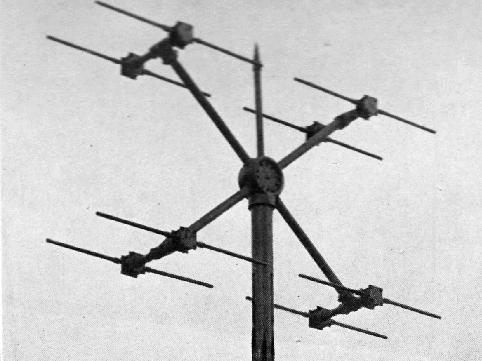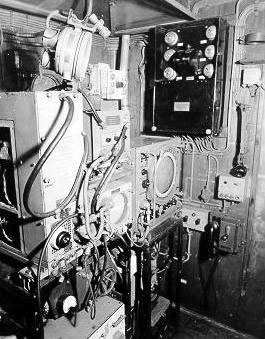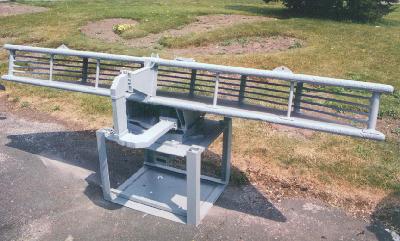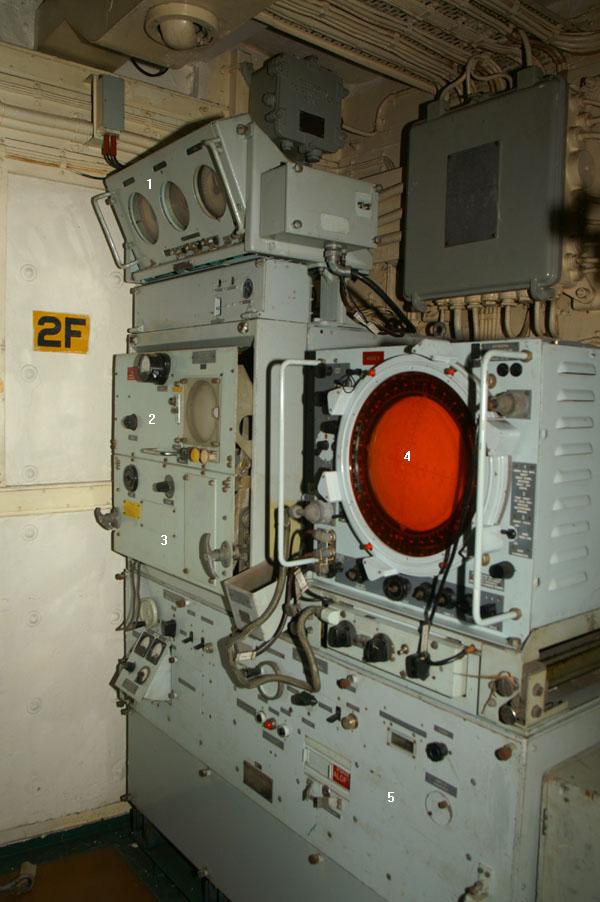| Type 271Q SURFACE/AIR SEARCH RADAR (August 1943 to April 1944) |
| The 271Q radar set was installed on HMCS Haida when she comissioned.
The radar hut was located astern between the searchlight and the pom-pom
guns. An integral, perspex, "hat-box" antenna enclosure was mounted directly
above the 271Q office. 2 271Q was removed in April 1944 with the
fitting of 291 radar and the Lattice mast.
While the SW1C radar prototype was being tested in HMCS Chambly, a new air/surface warning set, namely the 271, was being tested aboard a Flower class corvette, HMS Orchis in England on 25 March 1941. The 271 set, using the cavity magnetron, operated on a 10 centimeter wavelength at a power level of 5 kilowatts,. It used an “A” scope for display. Sea trials indicated that the 271 could detect a trimmed-down submarine at 3,500 yards and a periscope at 900 yards. A battle ship was detectable at 13 nm. By the spring of 1943, the large majority of mid-ocean escorts were fitted with the 271, however, many ships of the Western Local Escort Force were not. To complicate matters, the British introduced two improved models, namely, the 271P and 271Q. Both of these versions had output power increased from 5 kilowatts in the 271 to 90 kilowatts in the 271Q. This quantum jump in power output can be directly attributed to a major improvement in magnetron technology. While the RCN was struggling to fit new ships with first generation 271's, they were also under great pressure to upgrade existing radars. By September 1943, only fourteen 271Q sets and fifty three 271P's were fitted into RCN vessels along with three original production models. The introduction of 10 cm radar into fleet destroyers was delayed until the needs of the escorts were satisfied. Since the 271Q set operated at the 10 cm wavelength, the antenna could be made small enough to be housed in its own Perspex bubble and mounted on top of the operator's cabin. The antenna consisted of a 'double cheese wheel'' with separate transmitting and receiving antennas stacked one on top of the other. This radar was sometimes called 'lighthouse' due to the shape of the perspex dome. Some of the transmitting and receiving elements had to be affixed directly to the back of the antenna to overcome co-axial line losses. In the original 271, the power feed to the antenna was by coaxial cable so this limited rotation to 200 degrees. When the original magnetron was redesigned to produce higher power, waveguide was introduced to the antenna system. Coaxial cable could not handle those power levels. |
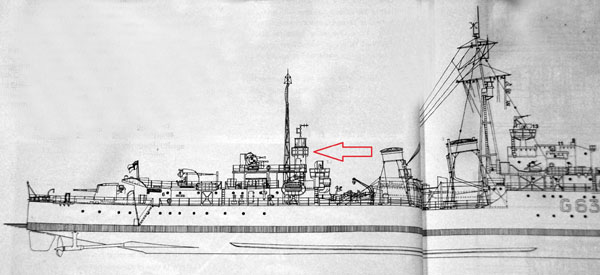 |
| Location of the 271Q radar aboard HAIDA. (Image from Battle Ensign Flying) |
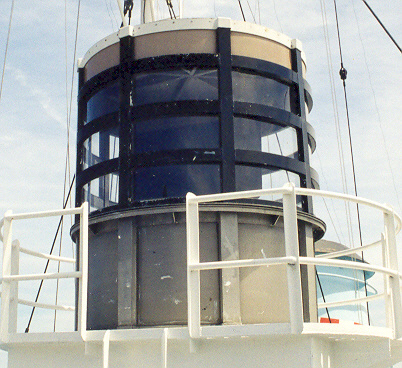 |
| The enclosure for the 271Q radar antennas was sometimes called the
"hatbox". During wartime, whenever 271Q fitted ships came into harbour,
the antenna enclosure was covered with a canvas cover to keep prying
eyes away from it. (Photo by Jerry Proc)
Initially, the new 271 set was viewed with suspicion by the crews of the ships in which they were installed. Noting that the ratings were reluctant to go aloft, especially to the crow's nest just above the 'lighthouse', the captain of a ship in which a new 271 radar had just been installed questioned a seaman as to the reason. After a bashful amount of toe stubbing, the sailor confessed that the 'buzz' was that rays from the set would make a man impotent. Nipping an incident in the bud, the quick thinking captain declared the rumour to be nonsense. "Radar rays", he maintained, "made a man temporarily sterile, not impotent". From this viewpoint, it was viewed as a bonus rather than a drawback especially on shore leave. The 271 then became the most popular piece of equipment on the ship. |
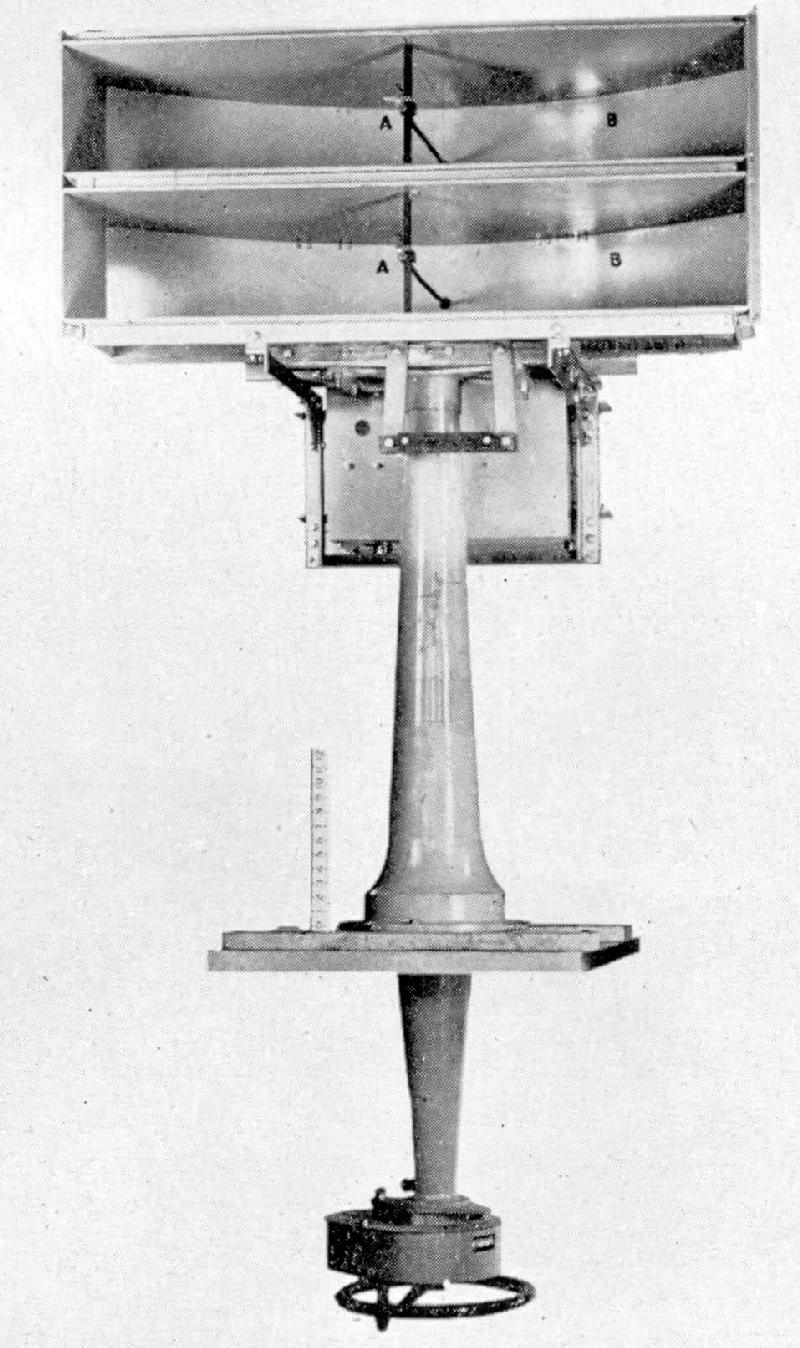 |
| Inside the enclosure , there were two, cheese- wheel style parabolic reflectors mounted on top of each other. One was for receive and the other for transmit. The antenna was manually trained by a handwheel located in the radar office. (Image source unknown) |
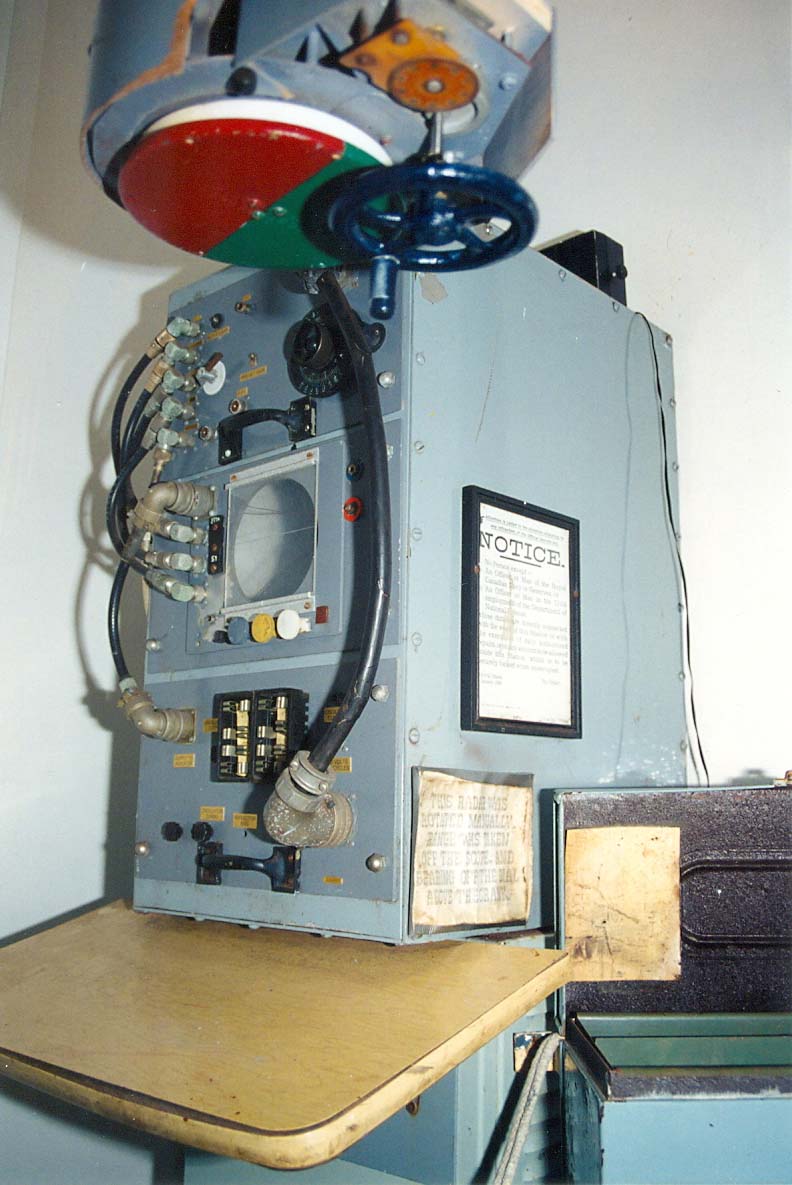 |
| This is a mockup of the 271 controls and electronics aboard HMCS Sackville . (Photo by Jerry Proc) |
